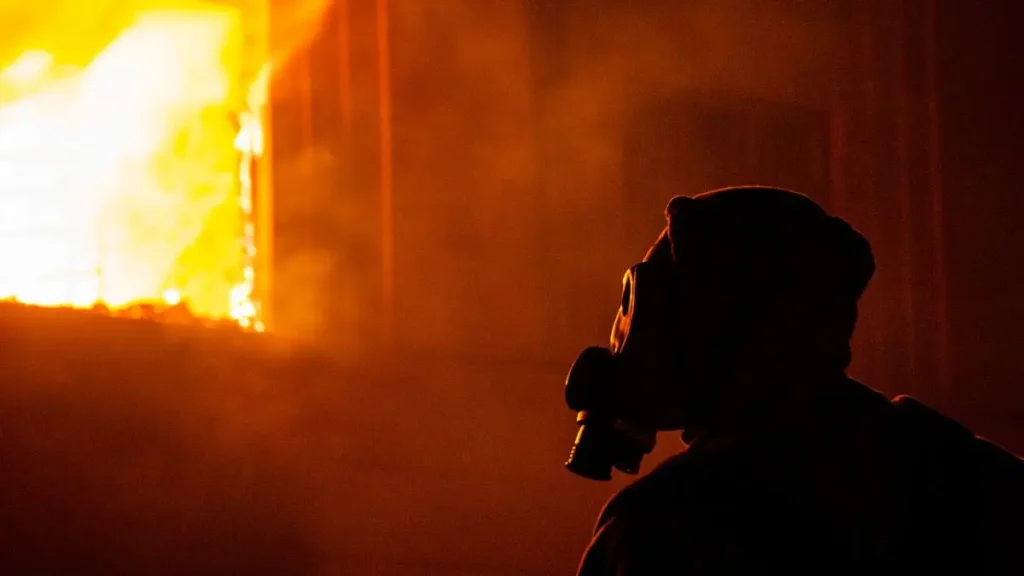Wheatfield House Fire Results in $140K Damage, Occupants Evacuated
When I first heard about the Wheatfield house fire on Nash Road, my heart sank. Around 1:20 p.m. on Thursday, deputies responded to 6935 Nash Road after a call reported smoke coming from the roof. I can only imagine the shock the residents felt as flames started consuming their home. Thankfully, they were safely evacuated before the fire could harm anyone.
Seeing the smoke, first responders knew every second counted. The Adams Volunteer Fire Company led the firefighting effort, supported by multiple nearby volunteer companies, the City of North Tonawanda Fire Department, and even the Niagara Falls Air Reserve Station Fire Department. It was a coordinated effort, showing just how communities come together when disaster strikes.
The house didn’t make it unscathed—officials estimate $140,000 in total damage, with $100,000 to the structure and $40,000 to the contents. No injuries were reported, but the emotional toll and disruption for the residents—and their pets—is significant.
I want you to picture this: your home, your memories, in flames for just a few hours. It’s a stark reminder of how quickly life can change, and why fire preparedness isn’t something we can put off.
How Fire Crews Contained the Blaze?
When I read the updates from the Niagara County Sheriff’s Office on Facebook, I was struck by how many teams jumped into action. The Adams Volunteer Fire Company led the charge, with support from St. Johnsburg, Bergholz, and Shawnee volunteer units. Even the City of North Tonawanda Fire Department and the Niagara Falls Air Reserve Station Fire Department pitched in.
Watching how multiple agencies coordinate like this reminds me that fighting a fire isn’t just about hoses and water—it’s about teamwork, timing, and trust. Every second mattered, and that swift response is why the residents made it out safely.
I think it’s also a reminder for all of us: knowing your local fire departments and having emergency contacts handy isn’t just advice—it’s essential. You never know when you might need that kind of community support.
Coordinated firefighting efforts are crucial, much like in South Charleston, where multiple crews battled a home engulfed in flames to save lives and property.
Extent of Fire and Smoke Damage
According to WGRZ, the house on Nash Road didn’t survive the fire unscathed. Officials estimate $140,000 in total damage—$100,000 to the structure and $40,000 to the contents.
It’s hard not to imagine walking through your home and seeing the walls, furniture, and memories charred or ruined. No injuries were reported, which is a blessing, but the emotional impact on the residents—and their pets—is profound.
For anyone reading this, it underscores how quickly a fire can escalate and why having smoke detectors, fire extinguishers, and a basic emergency plan can make all the difference. You might not be able to save everything, but you can save lives.
Fires can escalate in minutes, as seen in incidents like the tragic Ohio home fire where a man lost his life trying to rescue his dogs, highlighting the importance of quick evacuation.
Relief Efforts for Residents
After the fire, the Red Cross stepped in to support the two residents and their pets. I find these relief efforts so important—they remind us that communities really do take care of their own when disaster strikes.
Whether it’s providing temporary housing, essentials, or emotional support, having organizations like the Red Cross nearby is invaluable. If you’re ever in a similar situation, knowing who to call and where to get help can take a huge weight off your shoulders.
And if you’re not affected personally, you can still help—donate, volunteer, or even just share verified updates to raise awareness. Every little bit counts.
For live updates and community alerts about local emergencies and safety tips, many residents follow real-time notifications on WhatsApp channels dedicated to local incidents.
Fire Investigation Underway
The Niagara County Fire Investigation Unit is now working to figure out what caused the blaze. While the exact cause isn’t confirmed yet, investigators typically look at electrical issues, appliances, or other accidental triggers.
For me, this part of a story hits on prevention. Fires are terrifying, but understanding what causes them gives us tools to protect ourselves. I always think: what can I do differently in my home to prevent even a small spark from turning into a disaster?
Keeping fire extinguishers handy, checking wiring, and avoiding overloading outlets are simple steps, but they make a huge difference. Knowledge here is literally power—you can’t fight what you don’t understand.
Investigations into residential fires, like the one in Accomack County, help officials understand causes and prevent future tragedies.
Fire Safety Tips for Homeowners

If there’s one thing I want every reader to take away, it’s that prevention saves lives. Here’s what I personally recommend:
- Smoke Alarms: Test them monthly and replace batteries yearly.
- Sprinklers & Extinguishers: Keep one in the kitchen and near bedrooms.
- Evacuation Plan: Practice drills with your family and pets.
- Electrical Safety: Don’t overload outlets and unplug unused devices.
I know it sounds basic, but these are the habits that make a real difference. Reading about fires like the one on Nash Road is a wake-up call. You can’t always prevent a fire, but you can dramatically reduce the risk—and protect the people and animals you love.
What the Wheatfield Fire Teaches About Home Safety?
Reading about the Wheatfield house fire, I couldn’t help but reflect on the lessons it holds for all of us. First and foremost: early detection saves lives. The residents got out safely because smoke was noticed quickly, and deputies responded immediately. That’s a reminder to never underestimate the power of a working smoke detector.
Second, community coordination matters. Multiple fire companies and agencies came together seamlessly. It’s proof that preparation and teamwork aren’t just abstract ideas—they’re life-saving. You might not be a firefighter, but knowing your local resources and emergency numbers can make a huge difference if disaster strikes.
Third, financial preparedness counts. $140,000 in damages is massive, even for well-insured homeowners. Reviewing your insurance, documenting possessions, and understanding your coverage can reduce stress and help you recover faster if the worst happens.
Finally, fire safety is about daily habits, not one-time measures. Regularly check alarms, plan evacuation routes, and inspect appliances. Small, consistent actions protect what matters most—your family, your pets, and your home.
So here’s my question for you: when was the last time you reviewed your fire safety plan? Take a few minutes today—it could save a lifetime of heartache.
If you want more tips on fire safety and home preparedness, check out our Home Incidents section for detailed guides and expert advice.
Disclaimer: This article is based on official reports and public statements from local authorities. Fire details and investigations may change as new information emerges. Always follow guidance from your local fire department and emergency services.


